24 Savory Italian Beef Dishes to Elevate Your Dinner Table
Italian beef stands as a culinary marvel that tantalizes taste buds with its rich, succulent profile and deeply satisfying textures.
Meat lovers and food enthusiasts consistently celebrate this delectable specialty for its remarkable versatility and intense flavor combinations.
Regional techniques and generations of cooking wisdom have transformed simple ingredients into extraordinary gastronomic experiences.
Tender, slow-cooked preparations showcase the remarkable skill of chefs who understand the delicate balance between seasoning and meat preparation.
Passionate cooks recognize the intricate art of transforming humble beef into something truly spectacular and memorable.
Each recipe represents a unique journey through traditional and innovative cooking methods that elevate simple ingredients.
Regional variations demonstrate the incredible creativity and cultural significance embedded in these remarkable culinary traditions.
These 24 premium Italian beef dishes promise a mouthwatering adventure that will inspire your next kitchen exploration:
Premium Italian Beef Dishes for the True Connoisseur
Italy’s finest beef dishes balance rich flavor with elegant presentation. Slow braises and quick sears are all about letting the quality of the meat shine.
Bistecca Alla Fiorentina
Bistecca alla Fiorentina is a sacred Italian beef steak crafted from premium Chianina cattle, distinguished by its massive porterhouse-style cut and precise grilling technique.
Thick steaks measuring at least three fingers wide are essential for creating its signature exterior char and juicy interior.
Dry-aged beef ensures exceptional tenderness and rich flavor profile that sets this steak apart from standard preparations.
Tuscan chefs traditionally grill the meat over extremely high flames, allowing a robust crust to develop while maintaining a rare to medium-rare center.
Salt and pepper represent the only seasoning, highlighting the meat's natural qualities.
Each steak typically weighs between 1.5 to 2 kilograms, making it perfect for sharing among dining companions.
Professional butchers carefully select meat from specific cattle regions to guarantee superior quality.
Regional pride surrounds this iconic Florentine dish, which embodies centuries of Italian culinary mastery.
Tagliata Di Manzo
Tagliata is an iconic Italian beef dish featuring perfectly seared, medium-rare steak sliced thin and served over peppery arugula.
Sirloin steak forms the centerpiece of this simple yet elegant preparation, grilled to seal in rich flavors and juiciness.
Hot griddle or barbecue cooking creates a crisp exterior while maintaining a succulent interior.
Salt and black pepper enhance the meat's natural taste, with extra-virgin olive oil adding subtle richness.
Cherry tomatoes may accompany the dish for additional freshness.
Thin slicing allows each piece to showcase the steak's perfect doneness and tenderness.
Rocket leaves provide a peppery base that complements the meat's robust flavor.
Drizzled olive oil adds final depth and shine to this classic Italian main course.
Carne Salada
Carne salada represents a distinctive salt-cured beef specialty from Trentino, Italy, dating back to the 16th century and carefully prepared through a meticulous preservation process.
Traditional preparation involves seasoning beef rump with salt, pepper, juniper berries, rosemary, crushed garlic, and bay leaves during an aging period of at least two weeks.
Artisan producers carefully turn and knead the meat in steel tubs, developing its signature intense flavor profile.
Serving options include thin raw slices drizzled with extra virgin olive oil and accompanied by lemon, capers, or rocket and parmesan cheese.
Alternatively, slightly thicker slices can be quickly fried and paired with boiled beans.
Regional butchers take great care in selecting high-quality beef and maintaining precise curing techniques.
Meat lovers appreciate this delicacy for its rich, complex taste and traditional preparation method.
Trentino's culinary heritage shines through this unique preserved meat product that has survived generations of food traditions.
Peposo
Peposo is a robust Tuscan beef stew originating from ceramic workers near Florence, traditionally prepared using tough, inexpensive meat cuts slow-cooked with robust red Chianti wine, crushed black peppercorns, and aromatic vegetables.
Workers initially created this hearty dish while firing ceramic kilns, letting the stew simmer alongside terracotta tiles to tenderize meager meat cuts economically.
Generous amounts of garlic, onions, carrots, and celery contribute deep flavor profiles to the rich preparation.
Some regional variations incorporate pig's trotter or calf's foot for additional complexity.
Fresh herbs enhance the stew's savory depth while maintaining its rustic character.
Occasionally, tomatoes might supplement the ingredients, though they are not part of the original recipe.
Traditionally, peposo emerges from earthenware pots after hours of slow cooking.
Serving the stew atop toasted bread allows diners to soak up its intensely seasoned juices.
Brasato Al Barolo
Brasato represents a luxurious northern Italian beef braise marinated and cooked in Barolo wine from Piedmont's prestigious wine region.
Rich red wine infuses tender beef with complex layers of flavor during slow cooking.
Carrots, celery, onions, bay leaves, cinnamon, and cloves contribute aromatic depth to the meat's marinade.
Chefs carefully brown the beef before braising it slowly in the wine mixture.
Cooking transforms tough beef cuts into meltingly soft meat with intense flavor.
Braising liquid becomes a smooth, concentrated sauce pureed and drizzled over sliced meat.
Side dishes like creamy polenta or mashed potatoes complement the rich beef.
Diners appreciate this hearty regional specialty that showcases Piedmont's culinary traditions.
Carbonade Valdostana
Carbonade valdostana sparks culinary magic with its hearty alpine beef stew rooted in Italy's mountainous Aosta valley.
Mountain farmers traditionally crafted this rustic dish using preserved salted beef, transforming tough meat into a flavor-packed meal.
Regional red wine adds depth and complexity to the slow-cooked meat, creating intense richness that distinguishes this specialty.
Cubed beef simmers with aromatic spices like cloves, cinnamon, and nutmeg, developing complex flavor profiles.
Orange peel and bay leaves contribute subtle fragrant undertones to the robust stew.
Onions and flour help thicken the sauce, ensuring a silky texture and deep umami taste.
Authentic preparation involves gentle cooking to tenderize meat and meld ingredients seamlessly.
Italians typically serve carbonade valdostana steaming hot over creamy polenta or alongside garlic mashed potatoes, making it a comforting winter dish that warms both body and soul.
Straccetti
Straccetti are delicate, thin beef strips originating from Rome that showcase Italian culinary simplicity through quick-cooking techniques.
Roman kitchens transform skirt or flank steak into tender meat ribbons seared with aromatic herbs and greens.
Olive oil forms the base for this traditional preparation, where garlic releases its fragrance before being removed from the pan.
Rosemary and salt enhance the meat's natural flavors during rapid cooking.
Radicchio or arugula wilts alongside the beef, adding peppery undertones to the dish.
Parmigiano-Reggiano provides a final sharp, salty accent that complements the meat's richness.
Thin slicing ensures each bite remains juicy and tender.
This Roman specialty captures fresh ingredients and minimal cooking time in a single, elegant plate.
Carne Cruda All’Albese
Carne cruda all'albese represents a luxurious raw beef specialty from Piedmont's Alba region, highlighting pristine local beef dressed with bright lemon, garlic, and delicate seasonings.
Italian culinary masters meticulously hand-chop premium beef into fine pieces, ensuring tender texture and pure flavor profiles.
Signature white Alba truffles elevate this rustic dish when available, transforming simple ingredients into an extraordinary gastronomic experience.
Parmigiano-Reggiano cheese shavings add sharp, salty notes complementing the beef's richness.
Regional Piemontese hazelnuts provide gentle crunch and nutty undertones when sprinkled on top.
Salt, pepper, and fresh lemon juice enhance the meat's natural qualities without overwhelming its delicate character.
Wild mushrooms serve as an affordable alternative when rare white truffles prove too expensive.
Traditional preparation emphasizes quality ingredients and minimal intervention, allowing pure flavors to shine through.
Tzigoiner
Tzigoiner represents a robust Italian grilling tradition featuring thin beef slices expertly skewered and marinated in wine, oil, and spices.
Originating from Valtellina, this hearty dish involves carefully wrapping meat around wooden skewers before grilling to succulent perfection.
Chefs season the beef with salt and pepper, ensuring a rich flavor profile that enhances the meat's natural taste.
Pancetta sometimes adds an extra layer of complexity to the dish's preparation.
Hot grilling creates a beautiful char while maintaining the meat's juicy interior.
French fries and condiments like mustard and grated horseradish typically accompany the grilled meat.
Skilled preparation allows the beef to slide effortlessly off the skewer, revealing a perfectly cooked centerpiece.
Maximum flavor comes from precise marination and careful grilling techniques.
Goulash Alla Goriziana
Goulash alla Goriziana represents a delicious culinary crossroads where Italian, Austrian, and Hungarian flavors merge seamlessly in a robust meat stew.
Austrian and Hungarian influences define this regional dish from northeastern Italy's Gorizia province, creating a unique gastronomic experience.
Beef or veal simmers slowly with onions, paprika, and carefully selected spices to develop deep, complex flavors.
Traditional preparation involves creating a rich, thick sauce that distinguishes this version from classic Hungarian goulash.
Mild yet intensely satisfying, the stew showcases the region's historical connections to the Austro-Hungarian Empire.
Polenta, potatoes, or bread typically accompany the dish, adding texture and complementing the meat's richness.
Regional ingredients and generations-old cooking techniques contribute to its distinctive character.
Family recipes passed down through generations ensure authenticity and maintain the stew's traditional essence.
Manzo All’Olio
Manzo all'olio represents a classic Italian beef preparation originating from Rovato with deep historical roots tracing to 16th-century noble kitchens.
Succulent beef cuts like rump or priest's hat undergo a precise cooking technique involving quick searing to lock in juices and slow braising for maximum tenderness.
Rich olive oil infuses the meat with traditional flavors while complementary ingredients such as white wine, garlic, parsley, rosemary, and anchovies create a complex flavor profile.
Breadcrumbs and seasonal vegetables add textural contrast and depth to this elegant dish.
Regional variations reflect family traditions and personal preferences.
Documented by noblewoman Donna Veronica Porcellaga, this recipe showcases Italian culinary sophistication.
Each preparation demonstrates meticulous attention to ingredient selection and cooking method.
Generations have cherished this memorable beef preparation as a testament to Italian gastronomic heritage.
Bruscitt
Bruscitt embodies rustic Italian cuisine with its robust flavor profile and traditional preparation method from Lombardy's Busto Arsizio.
Skilled local butchers carefully slice and dice high-quality beef before slowly cooking it with pancetta, creating a rich, hearty meat dish.
Garlic and cabbage enhance the meat's depth, while red Barbera wine adds complex undertones during the final high-heat reduction.
Butter provides a smooth, silky texture that binds the ingredients together.
Salt and pepper season the meat, balancing its intense flavors.
Generations of Italian families have enjoyed this classic winter comfort food.
Regional ingredients and slow-cooking techniques define its authentic character.
Careful preparation transforms simple components into a memorable dining experience.
Braciole Rifatte
Braciole rifatte embodies Florentine culinary tradition through its expertly prepared meat slices pounded thin and crisp-fried in olive oil.
Veal or beef transforms into a golden-brown delicacy when coated with eggs and breadcrumbs and quickly seared to perfection.
Garlic and tomatoes create a rich sauce that bathes the meat after simmering with beef stock and herbs.
Salt and pepper enhance the flavor profile of this classic Italian dish.
Beaten eggs provide a delicate coating that helps breadcrumbs adhere to the meat.
Parsley adds a fresh green accent to the final preparation.
Olive oil serves as the primary cooking fat for both frying and sauce creation.
Italian home kitchens have perfected this technique over generations, making braciole rifatte a beloved comfort food.
Braciole Messinesi
Braciole messinesi are succulent Sicilian beef rolls packed with robust flavors from Messina's regional culinary traditions.
Sicily's grill-cooked specialty combines tender beef slices with a rich breadcrumb mixture featuring grated stale bread, pecorino, parsley, and garlic.
Olive oil helps bind the ingredients, creating a savory coating that enhances the meat's natural taste.
Caciocavallo cheese adds creamy texture inside each carefully rolled slice.
Four beef pieces typically thread onto a single skewer, allowing even grilling and perfect caramelization.
Cooking over direct heat transforms the rolls into a crispy, golden-brown delicacy.
Mediterranean ingredients and traditional grilling techniques give these braciole their distinctive, smoky flavor profile.
Messina's culinary heritage shines through this simple yet remarkable street food.
Involtini Di Manzo
Involtini di manzo are succulent Italian beef rolls packed with robust flavors and traditional Roman cooking techniques.
Originating in Rome, these meat rolls feature thin beef slices wrapped around prosciutto, carrots, and celery.
Chefs carefully season the beef with salt and pepper before layering delicate prosciutto and crisp vegetable strips.
Each roll gets secured with toothpicks and browned in olive oil to develop a rich, caramelized exterior.
Garlic sizzles in the same pan before tomatoes and white wine create a fragrant sauce.
Slow-simmering allows the rolls to absorb the complex sauce's flavors during an extended cooking process.
Tender meat and aromatic sauce make this dish a beloved staple of Roman cuisine.
Manzo Al Limone
Manzo al limone represents a zesty Lombardy beef dish that transforms simple ingredients into a bright, tangy masterpiece.
Italian home cooks marinate beef with fresh lemon slices, creating a bright, aromatic flavor profile that distinguishes this regional specialty.
Beef gets rubbed thoroughly with citrus and seasoned with salt and pepper before careful preparation.
Lemon slices line the bottom and top of the meat during a three-day refrigeration process.
Cooks turn the meat daily to ensure even marination and maximum flavor absorption.
Olive oil and butter enhance the meat's richness during cooking.
Slow oven roasting tenderizes the beef, allowing lemon's bright essence to permeate each bite.
Mediterranean simplicity shines through this elegant, minimalist Italian recipe that celebrates fresh ingredients and traditional cooking techniques.
Garofolato
Garofolato represents a classic Roman pot roast celebrated for its aromatic clove-studded beef slowly simmered in red wine and vegetables.
Traditionally prepared with girello (eye round beef), the meat is carefully pierced with whole cloves before roasting in a terracotta pot.
Skilled Roman cooks carefully brown the beef with lard, then add onions, carrots, celery, garlic, and parsley to create a rich sauce.
Red wine and tomatoes enhance the dish's deep flavors during slow cooking.
Tender meat slices are arranged on a platter and generously covered with the fragrant cooking sauce.
Restaurants and home kitchens across Italy continue to prepare this traditional dish with careful attention to technique and ingredient quality.
Generations have enjoyed garofolato as a comforting weekend meal showcasing Italy's rustic culinary traditions.
Stracotto Alla Fiorentina
Stracotto alla fiorentina is a rustic Tuscan beef stew slow-cooked to melt-in-your-mouth perfection.
Florence's signature dish transforms tough beef cuts into a rich, tender masterpiece through patient braising in red wine.
Lean beef gets larded with pancetta and carrot strips, then carefully seasoned and tied with kitchen twine.
Chopped vegetables like celery, onions, and carrots sizzle in olive oil before the meat browns in the same pan.
Red wine deglazes the caramelized bits, creating complex flavor layers.
Ripe tomatoes join the mix, adding depth and acidity to the sauce.
Gentle simmering for two hours breaks down muscle fibers, ensuring incredible softness.
Served hot, this stew embodies Tuscan comfort cooking with its deep, concentrated flavors.
Picchiapo
Picchiapo represents a classic Roman beef stew bursting with rustic flavors and traditional ingredients.
Roman home kitchens carefully prepare this dish by marinating beef overnight with salt to enhance its rich taste.
Slow-simmering transforms tough meat cuts into tender, succulent strands infused with white wine and aromatic spices.
Cooks carefully layer onions, carrots, cloves, and red pepper flakes to build complex flavor profiles during cooking.
Beef is gently simmered in a mixture of water and wine until perfectly tender and easily shredded.
Coarsely chopped carrots add texture and depth to this simple yet satisfying meal.
Marjoram and black peppercorns contribute subtle herbal and spicy undertones to the final dish.
Olive oil and tomatoes complete the traditional Roman recipe, creating a comforting and hearty meal that celebrates regional culinary traditions.
Medaglioni Alla Rossini
Medaglioni alla Rossini are elegant beef medallions from Pesaro that showcase sophisticated Italian cooking techniques with premium ingredients.
Chianina beef serves as the star of this luxurious dish, carefully cut into tender medallions and browned in a rich blend of olive oil and butter.
Skilled cooks flour the meat before deglazing with Vin Santo wine, allowing the liquid to evaporate and create a complex sauce that infuses deep flavor into each bite.
Prosciutto crudo adds a salty contrast to the succulent beef, while Gruyere cheese provides a creamy finish to the medallions.
Salt and pepper enhance the natural flavors of the meat, creating a balanced and refined preparation.
Traditional preparation involves precise cooking methods that preserve the beef's tenderness and maximize the sauce's intensity.
Regional ingredients from Pesaro contribute to the dish's authentic character and culinary heritage.
Each medallion represents a perfect balance of texture, flavor, and technique that epitomizes Italian gastronomic excellence.
Manzo Alla California
Manzo alla California represents a rich Lombardy beef dish featuring tender meat larded with pancetta and slowly braised in a luxurious cream-based sauce.
California town's signature recipe combines beef, pancetta, and onions carefully browned in butter until golden and fragrant.
Red wine vinegar adds sharp complexity to the cooking process, creating depth in the sauce's flavor profile.
Meat stock and heavy cream gradually merge during slow simmering, developing a silky, luxurious texture.
Chefs carefully layer ingredients to ensure maximum flavor infusion throughout the cooking method.
Traditional preparation requires several hours of gentle cooking to tenderize the beef and concentrate sauce flavors.
Regional techniques emphasize slow cooking and careful ingredient selection for optimal results.
Mountain influences from Lombardy shine through this hearty meat preparation that showcases local culinary traditions.
Costata Di Manzo Con Cipolle
Costata di manzo con cipolle represents a hearty South Tyrolean beef steak specialty featuring caramelized onions as its star ingredient.
Beef steaks get seared to perfection with white wine and flour creating a rich, golden-brown glaze.
Chefs carefully slice onions into thin strips and slowly cook them in olive oil and butter until they become deeply caramelized and sweet.
Salt and black pepper enhance the meat's natural flavors, adding depth to each bite.
Restaurants across South Tyrol serve this classic dish as a comforting main course highlighting regional culinary traditions.
Traditional preparation involves carefully browning the beef to lock in juices and maximize flavor intensity.
Regional wine complements the robust flavors of this simple yet sophisticated meal.
Manzo All’Aceto
Manzo all'aceto is a classic Lombardy beef dish simmered in red wine vinegar and olive oil until meltingly tender.
Rich beef round transforms through slow cooking into a succulent meal prized by Milan workers for generations.
Capers and pan juices enhance the meat's deep flavor profile, creating a simple yet sophisticated preparation.
Salt and pepper season the beef during its gradual cooking process.
Traditional preparation involves carefully slicing the meat into overlapping pieces on a warm plate.
Vinegar tenderizes the protein while adding subtle tangy notes.
Served hot or cold, manzo all'aceto remains a beloved regional specialty showcasing Italian culinary simplicity.
Coiettas
Coiettas are succulent Sardinian meat rolls featuring tender beef tenderloin wrapped around a rich, aromatic paste of lardo, garlic, and parsley.
Sardinian shepherds originally crafted these savory rolls as a portable protein-packed meal during long herding journeys.
Thin beef slices get carefully seasoned and spread with the flavorful lardo mixture before being expertly rolled and secured with kitchen string or toothpicks.
Traditional preparation involves grilling or roasting the rolls to enhance their natural meaty flavor and create a slightly crisp exterior.
Salt, black pepper, and regional herbs often complement the meat's seasoning.
Families across Sardinia have passed down this recipe through generations, maintaining its rustic culinary heritage.
Restaurants and home cooks continue to prepare coiettas as a beloved regional specialty.
Mediterranean ingredients and simple cooking techniques define these classic meat rolls.
How Do Italian Beef Dishes Differ From Those in Other European Countries?
Italian beef dishes stand out in Europe thanks to their rich regional heritage, simple yet bold flavors, and unique cooking techniques.
Unlike many European countries, where beef may be prepared with heavy sauces or slow-cooked stews, Italian cuisine often emphasizes the natural taste of the meat.
This approach results in beef dishes that feel elegant yet rustic, connecting diners directly to Italy’s culinary roots.
What Kinds of Vegetables and Starches Are Typically Served With Beef in Italy?
In Italy, sides served with beef are thoughtfully chosen to complement the meat’s flavor without overpowering it. Freshness, seasonality, and simplicity are key:

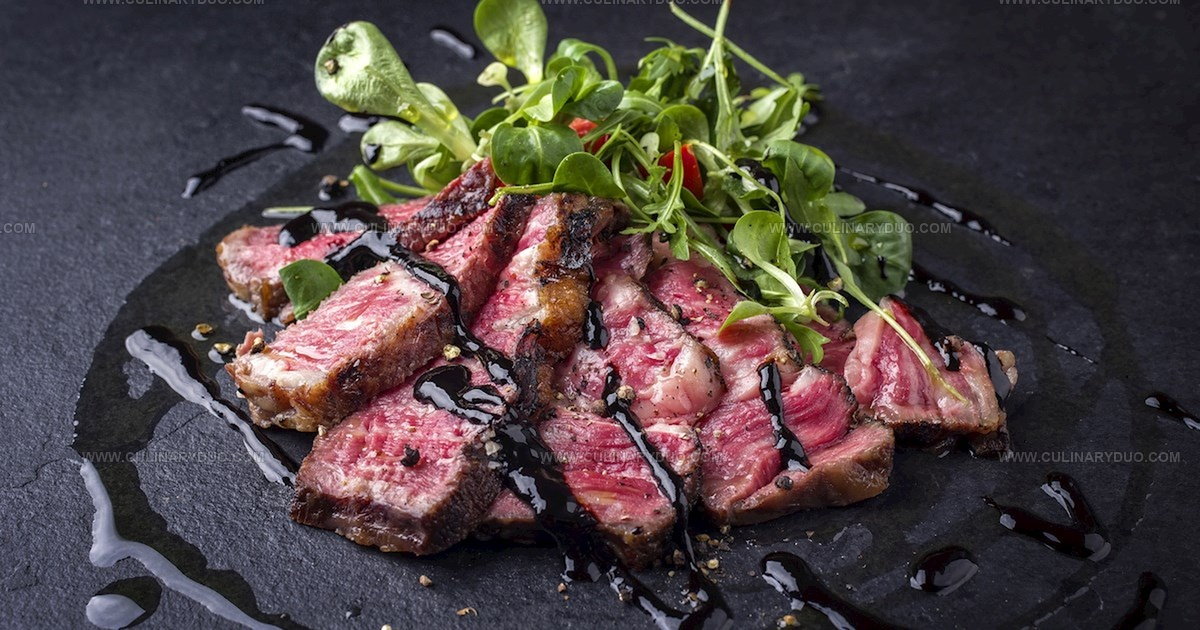
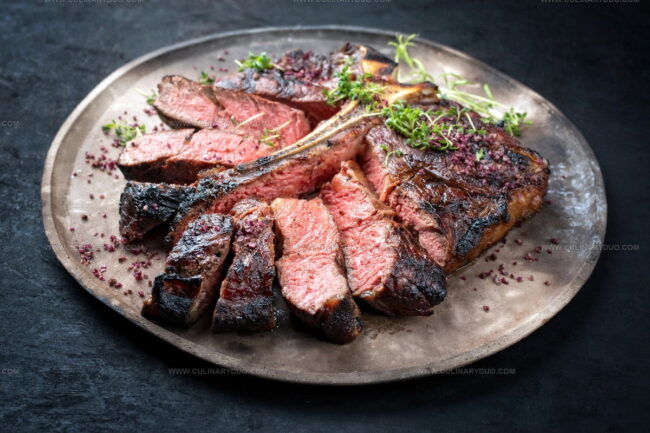
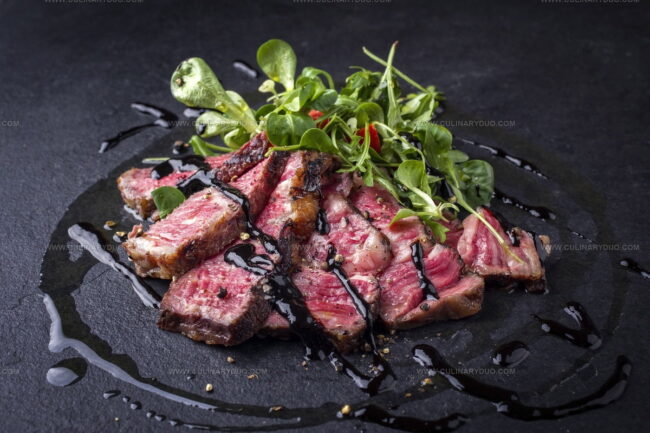
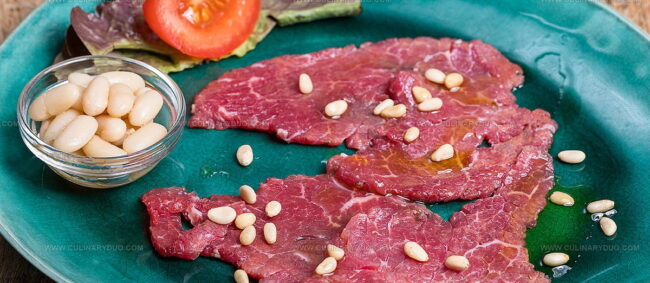
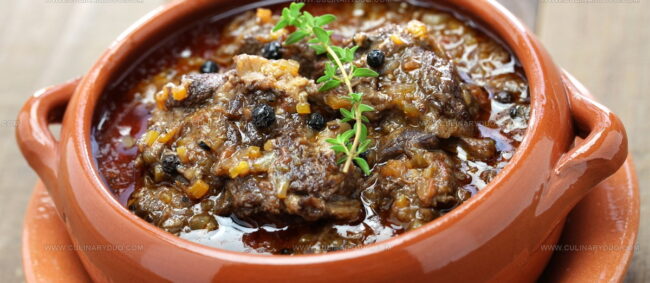
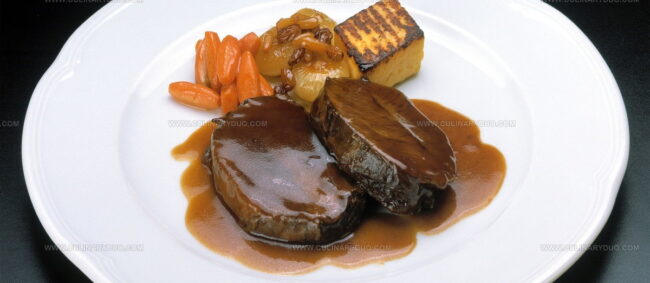
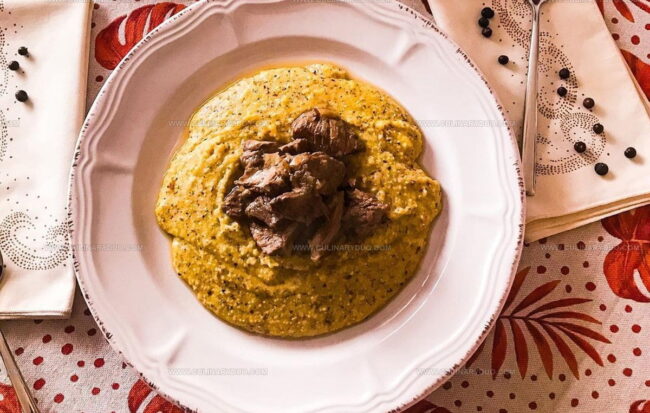
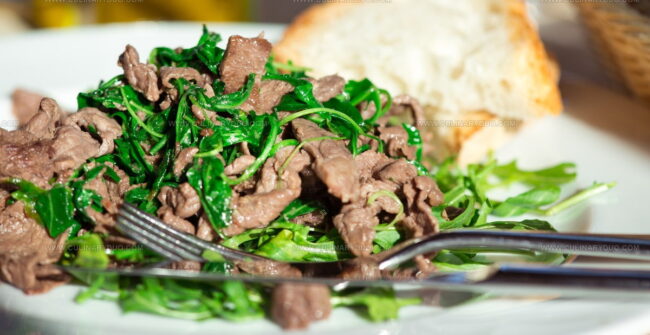
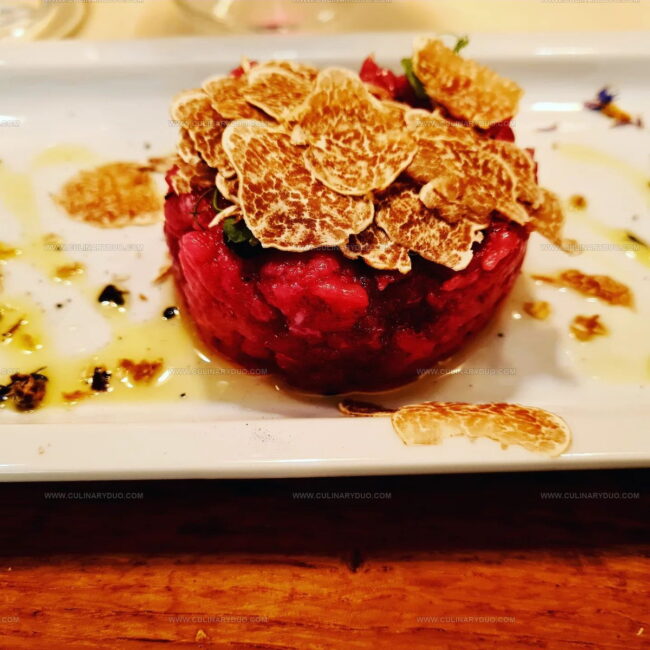
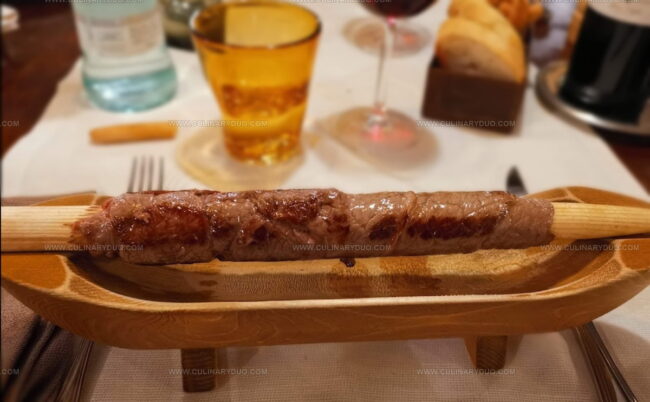
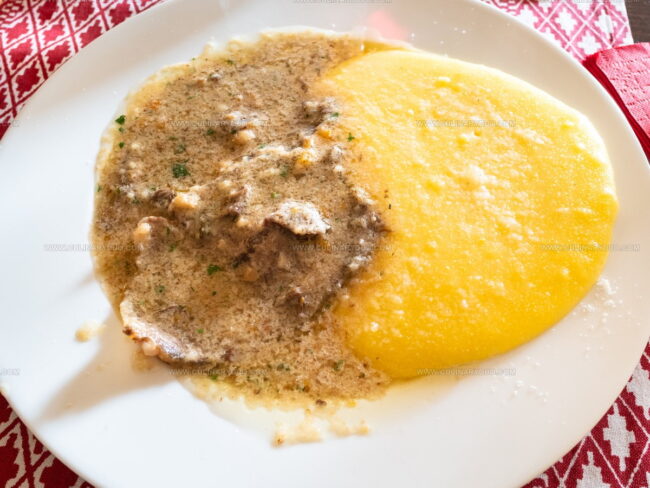
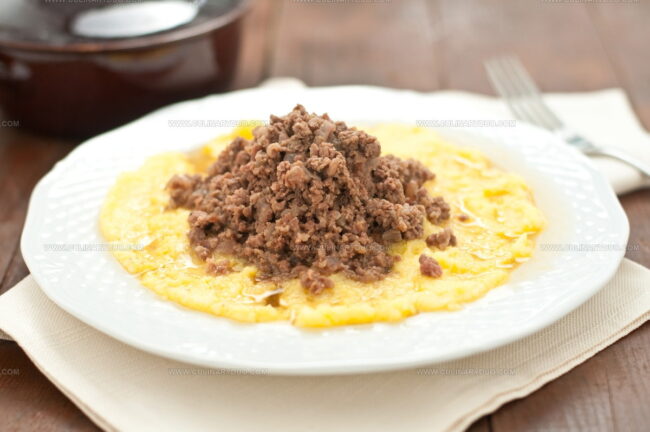
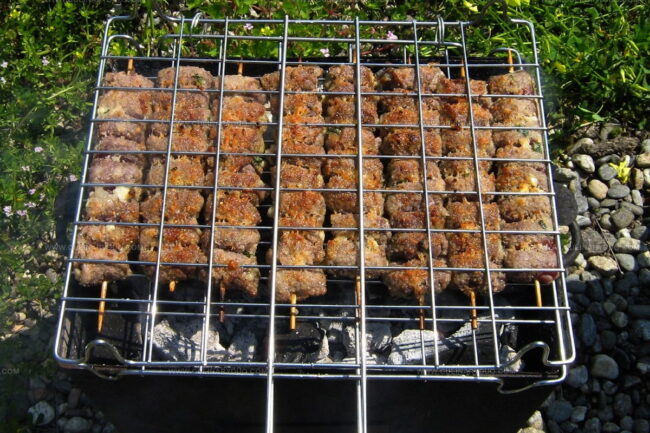
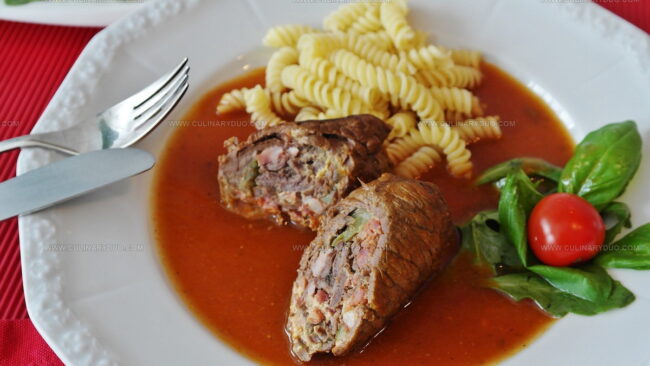
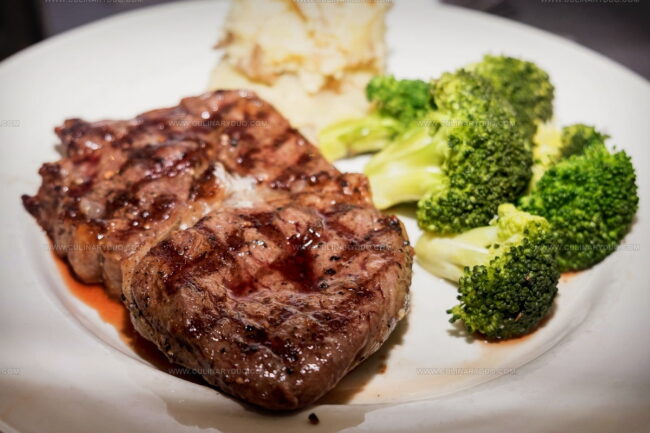
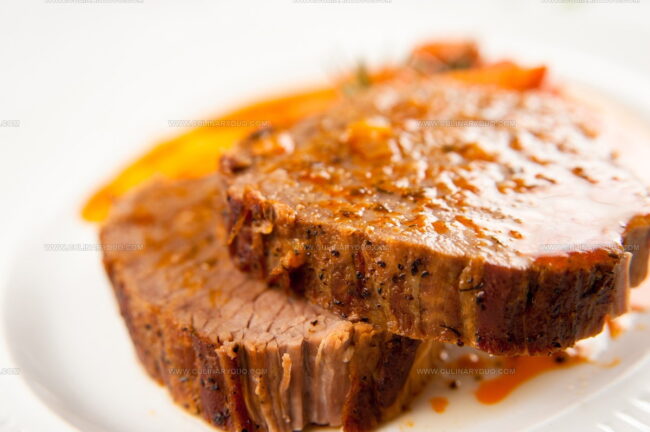
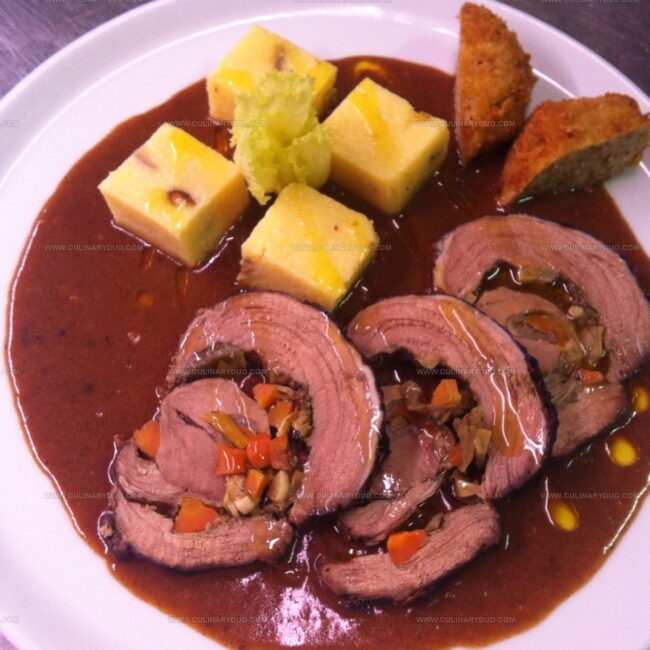
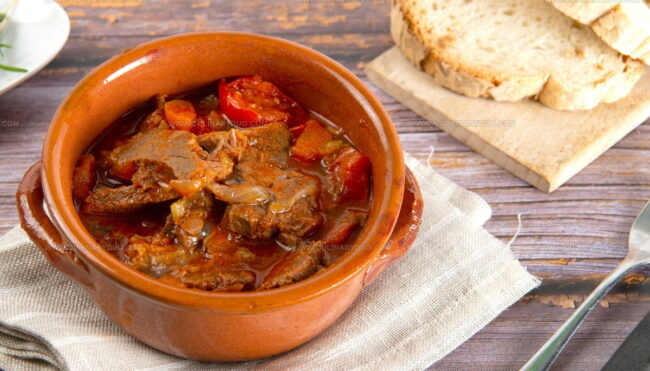
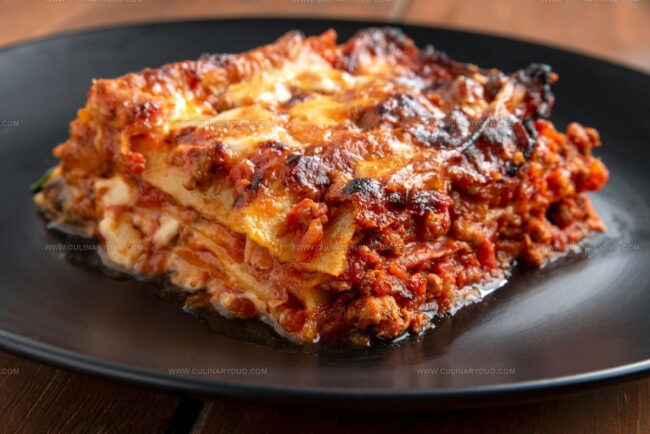
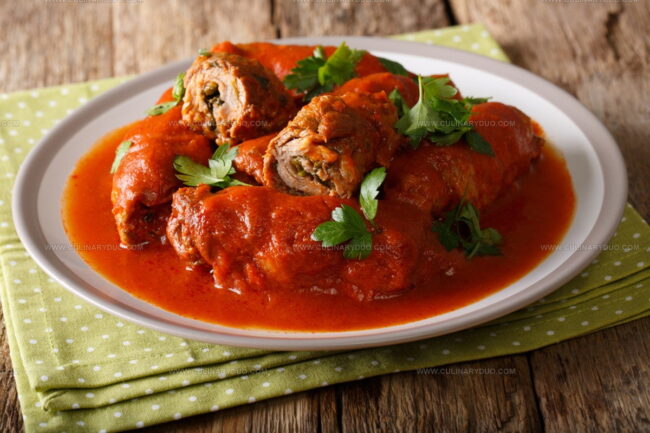
Michael Reyes
Founder & Lead Recipe Developer
Expertise
Education
Santa Fe Community College
Michael’s love for cooking runs deep, rooted in the bold, colorful flavors of his New Mexico upbringing.
After earning his Culinary Arts Certificate from Santa Fe Community College, he spent years sharpening his skills in kitchens that celebrated traditional Southwestern and Latin American dishes.
He believes cooking should feel approachable and fun, never complicated. When he’s not stirring up new recipe ideas, Michael’s out hiking scenic trails, chatting with farmers at local markets, or chasing the perfect sunset shot for inspiration.